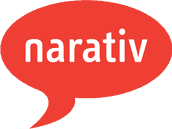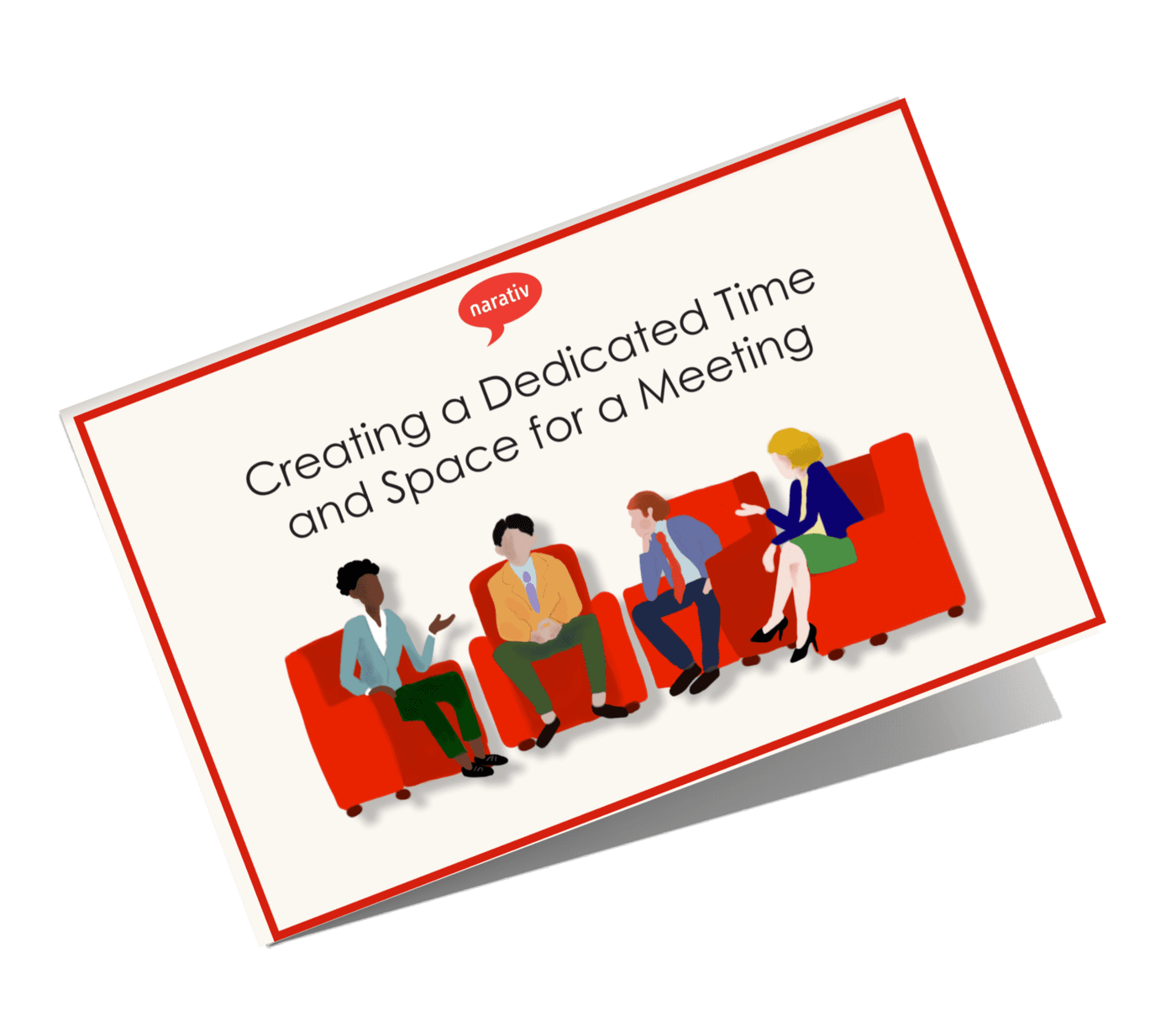Numbers don’t lie, but they don’t tell the whole story either. According to a report by McKinsey, companies in the top quartile for ethnic and cultural diversity are 36% more likely to outperform their competitors in terms of profitability.

Yet, even with such compelling statistics, we find that workplace diversity often grapples with deeply entrenched stereotypes that hinder genuine inclusion. But what if we told you there’s a method that goes beyond mere numbers and data to actually bring about real change in DEI in the workplace?
Enter the power of personal narratives—stories so authentic and compelling that they have the ability to dismantle prejudices and usher in an atmosphere of equity and inclusion. In this article, we’ll delve into the role that stereotypes play in the workplace, why diversity, equity, and inclusion (DEI) are so significant to an organization’s success, and how personal narratives can be used as a powerful tool for organization-wide change.
The Role of Stereotypes in the Workplace
Stereotyping is a cognitive shortcut that humans instinctively take to quickly process vast amounts of information. While this mechanism may have evolutionary origins, in a modern work environment, stereotypes can wreak havoc. When preconceived notions about gender, race, age, or any other differentiating factor enter the workplace, they form invisible barriers that impede true diversity, equity, and inclusion.
According to a study by the Center for Talent Innovation, employees who perceive bias are nearly three times as likely to be disengaged at work. Disengagement translates into lower productivity, higher turnover, and, ultimately, a cost to the organization that can be quantified in the millions. Stereotypes not only impact individual team members but also significantly distort team dynamics. When team members harbor stereotypes, collaborative efforts suffer, innovation is stifled, and the collective intelligence of the team declines.
The Role of Empathy in Breaking Down Stereotypes
It’s in this context that empathy becomes more than just a soft skill—it transforms into a powerful tool for combating stereotypes and facilitating DEI in the workplace. Empathy enables us to put ourselves in another person’s shoes, to see the world from their perspective, and most importantly, to challenge our own prejudices.
In fact, according to our earlier blog, “4 Benefits of Building Empathy in the Workplace,” fostering an empathetic culture has been shown to reduce workplace stress, increase job satisfaction, and even contribute to the bottom line. The key takeaway here is that empathy does not just improve individual relationships; it also sets the stage for a more diverse, equitable, and inclusive work environment.
By combining empathy with the power of personal narratives, organizations can bring to life a new paradigm of communication and human interaction, one that challenges the status quo and replaces outdated stereotypes with a richer, more nuanced understanding of individual identities.
The Significance of Diversity, Equity, and Inclusion (DEI)
In the corporate world, the terms Diversity, Equity, and Inclusion (DEI) have almost reached buzzword status. Yet, far from being mere jargon, DEI in the workplace represents an essential strategy for business success in a globalized economy. For a comprehensive understanding of DEI terminology and its modern implications, you might want to revisit our blog, “A Guide to Demystifying DEI Meaning for the Modern Workplace.”
The Business Case for DEI in the workplace
Contrary to the misconception that DEI is ‘good to have’ but not essential, a plethora of research demonstrates its direct impact on the bottom line. For instance, a Boston Consulting Group study showed that companies with diverse management teams generated 19% more revenue due to innovation than those with below-average diversity scores. Similarly, McKinsey’s research found that companies in the top quartile for gender diversity were 21% more likely to experience above-average profitability. The numbers make it clear: Diversity isn’t just an ethical imperative; it’s a business one.
A Multiplicative Effect: Diversity + Equity + Inclusion
While diversity is the starting point, equity and inclusion ensure that diversity can truly thrive. Equity involves fair treatment and access to opportunities for all employees, regardless of their background. Inclusion ensures that every team member feels valued, heard, and empowered to contribute.
Let’s illustrate this with storytelling, a method at the heart of Narativ‘s approach. Imagine an organization as a rich tapestry of stories. A diverse workforce brings in threads of different colors and textures. Equity ensures that each thread is given the same opportunity to be woven into the tapestry. Inclusion makes sure that each thread is strategically placed so that it contributes to a harmonious, beautiful, and resilient whole. You get the picture.
A Transformative Impact
Companies that commit to DEI in the workplace experience myriad benefits—increased employee engagement, improved brand reputation, and enhanced innovation, to name just a few. DEI is not a program to be completed but a continuous process that helps companies adapt, grow, and ultimately succeed in a competitive, interconnected world.
By deeply embedding DEI into their DNA and making it an ongoing dialogue—much like the personal narratives we advocate for—organizations stand to gain much more than they might anticipate.
Personal Narratives: A Powerful Tool for Change
In an era where data and statistics often take center stage, the power of personal narratives in effecting real change, particularly for DEI in the workplace, cannot be overstated. But what exactly are personal narratives?
Defining Personal Narratives
Personal narratives are real stories from life experiences, shared in a way that encapsulates both the particulars of the storyteller’s journey and universal human themes. These stories allow us to make meaningful connections by articulating experiences that may be specific but resonate with broad audiences. At Narativ, our unique storytelling method focuses on personal narratives, helping you excavate, craft, and present stories that not only inform but transform.
The Authenticity Factor
The reason personal narratives are so potent in challenging stereotypes is their authenticity. Stereotypes thrive in environments where people don’t see the full spectrum of another person’s humanity. A personal narrative, when shared authentically, breaks down these simplified assumptions and replaces them with complex, nuanced understandings of individuals and communities.
The Power of Relatability
Personal stories aren’t just authentic; they’re also deeply relatable. Unlike dry statistics or corporate memos, they capture the imagination and touch the heart, forging a human-to-human connection that becomes the basis for more open dialogues around difficult topics, including stereotypes.
Positive Outcomes: More Than Just ‘Checking the Box’
When personal narratives successfully challenge stereotypes, the impact is far-reaching and multi-dimensional. It improves team cohesion, fosters innovation, and contributes to the overall health and well-being of the workplace. This isn’t just about ‘checking the DEI box’—it’s about creating lasting change. For a deeper dive into this, we invite you to read our blog, “Storytelling for DEI Change: Not Just Checking the Box.”
By engaging with storytelling and personal narratives, organizations aren’t merely paying lip service to DEI. They are actively participating in shaping a more equitable work environment, one where every individual’s story is heard, valued, and integrated into the company’s larger narrative.
Steps to Sharing Personal Narratives
If the power of personal narratives is clear, the process of sharing them effectively—especially in a professional setting—might seem less straightforward. Here are some practical steps and guidelines to ensure that your stories make an impact while contributing positively to DEI in the workplace.
1. Start with Self-Reflection
Before sharing your narrative, invest some time in self-reflection. Understand the core message you want to convey and the stereotypes you aim to challenge. This process aligns well with Narativ‘s “excavate” stage, where you dig deep to understand your own story before crafting it for an audience.
2. Know Your Audience
Not all stories are appropriate for all settings. Assess the openness of your audience and tailor your narrative accordingly. Sometimes, a more conservative approach might be necessary to initiate dialogue, especially in environments that are new to DEI conversations.
3. Create a Safe Space
For any form of storytelling to be effective, a safe and supportive environment is crucial. This is where leadership plays a key role. If you’re a leader advocating for DEI, your actions will set the tone for the entire organization. In fact, we explore this dynamic extensively in our blog, “Why Real DEI Change Starts with Leadership.”
4. Craft with Care
Pay close attention to the crafting stage of your narrative. Aim for clarity, relatability, and emotional resonance. The more skillfully you present your story, the more likely it is to make a meaningful impact.
5. Be Prepared for Resistance
Challenging stereotypes often means pushing people out of their comfort zones, which can trigger resistance or even criticism. Arm yourself with facts and be prepared to address objections calmly. Sometimes the path to breaking stereotypes is a journey, not a sprint.
6. Seek Feedback and Iterate
After sharing your narrative, seek feedback from trusted colleagues or mentors. Use their input to refine your story for future conversations, ensuring that it stays relevant and impactful.
7. Embrace the Risk
As we’ve mentioned before, genuine storytelling takes a modicum of risk. However, when shared responsibly and respectfully, personal narratives can only serve to enrich your work environment.
By carefully crafting and sharing personal narratives, we not only contribute to the breakdown of stereotypes but also take concrete steps toward fostering diversity, equity, and inclusion in our workplaces. It’s a challenging yet rewarding process with the potential to enact lasting change at both the individual and organizational levels.
Final Thoughts
Initiating a culture of active listening and storytelling can serve as a powerful catalyst for traversing the challenges that often accompany the quest for diversity, equity, and inclusion in the workplace.
The fear of making mistakes shouldn’t hold you back from taking the first step. The key lies in your willingness to acknowledge those errors, learn from them, and courageously move forward. Any organization that has successfully ingrained DEI into its fabric will attest to the enduring value of tenacity.
While the journey toward a truly inclusive and diverse corporate landscape remains far from complete, progress is palpable. As an increasing number of enterprises commit to understanding and enacting DEI principles, we inch closer to shaping not just businesses but society at large into an environment that welcomes and celebrates everyone.
To explore how the art of storytelling can amplify your DEI initiatives, connect with our team.



